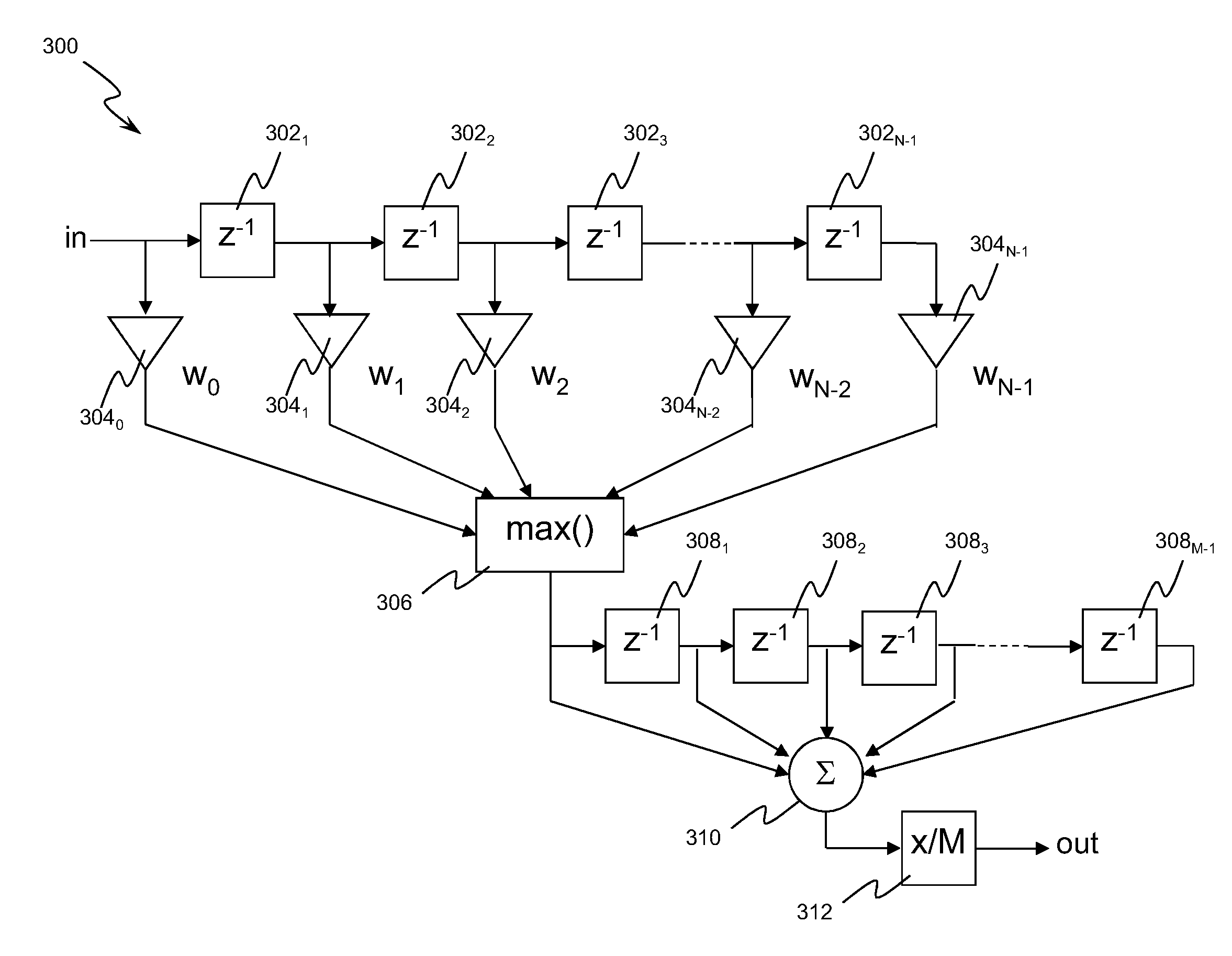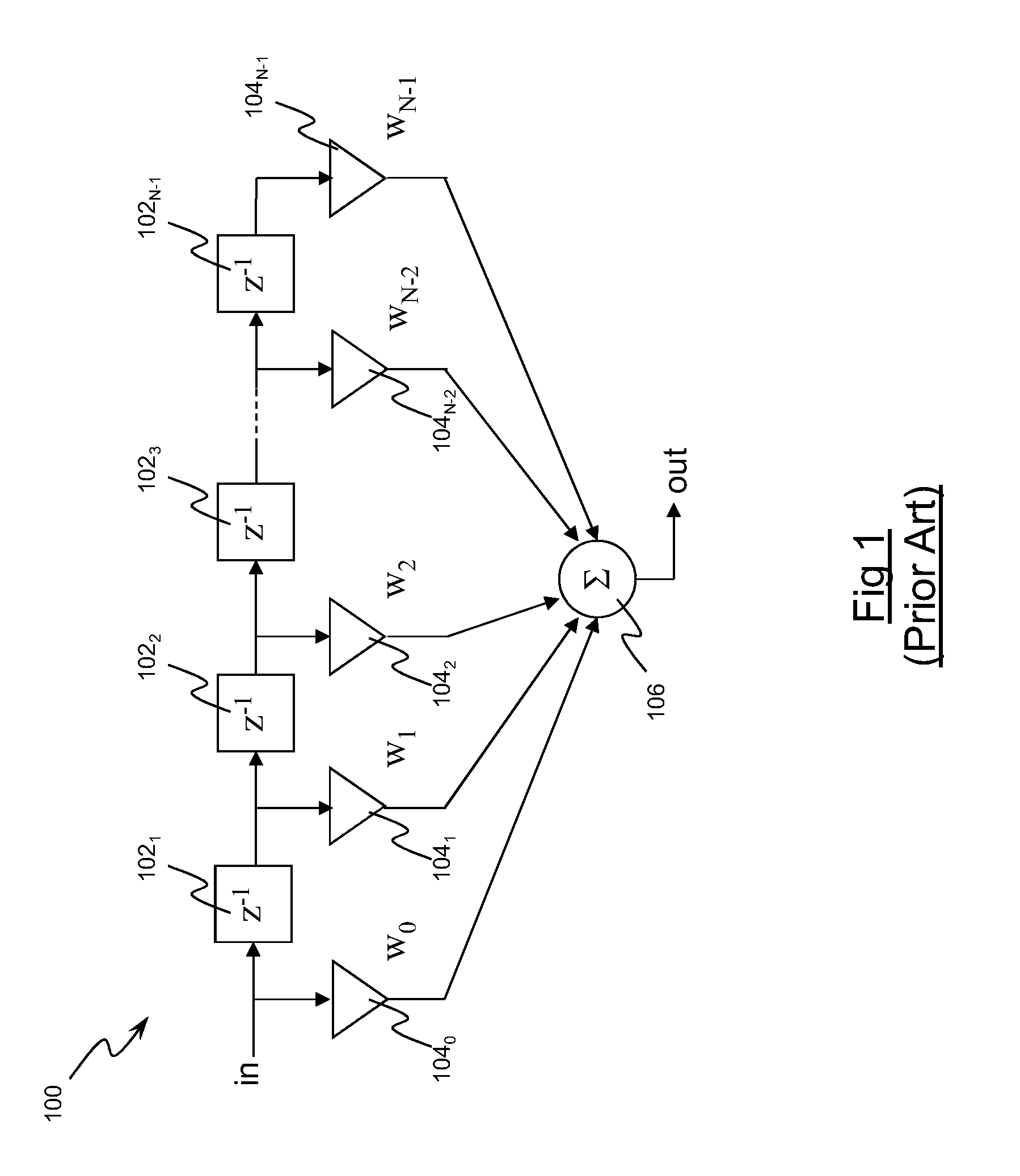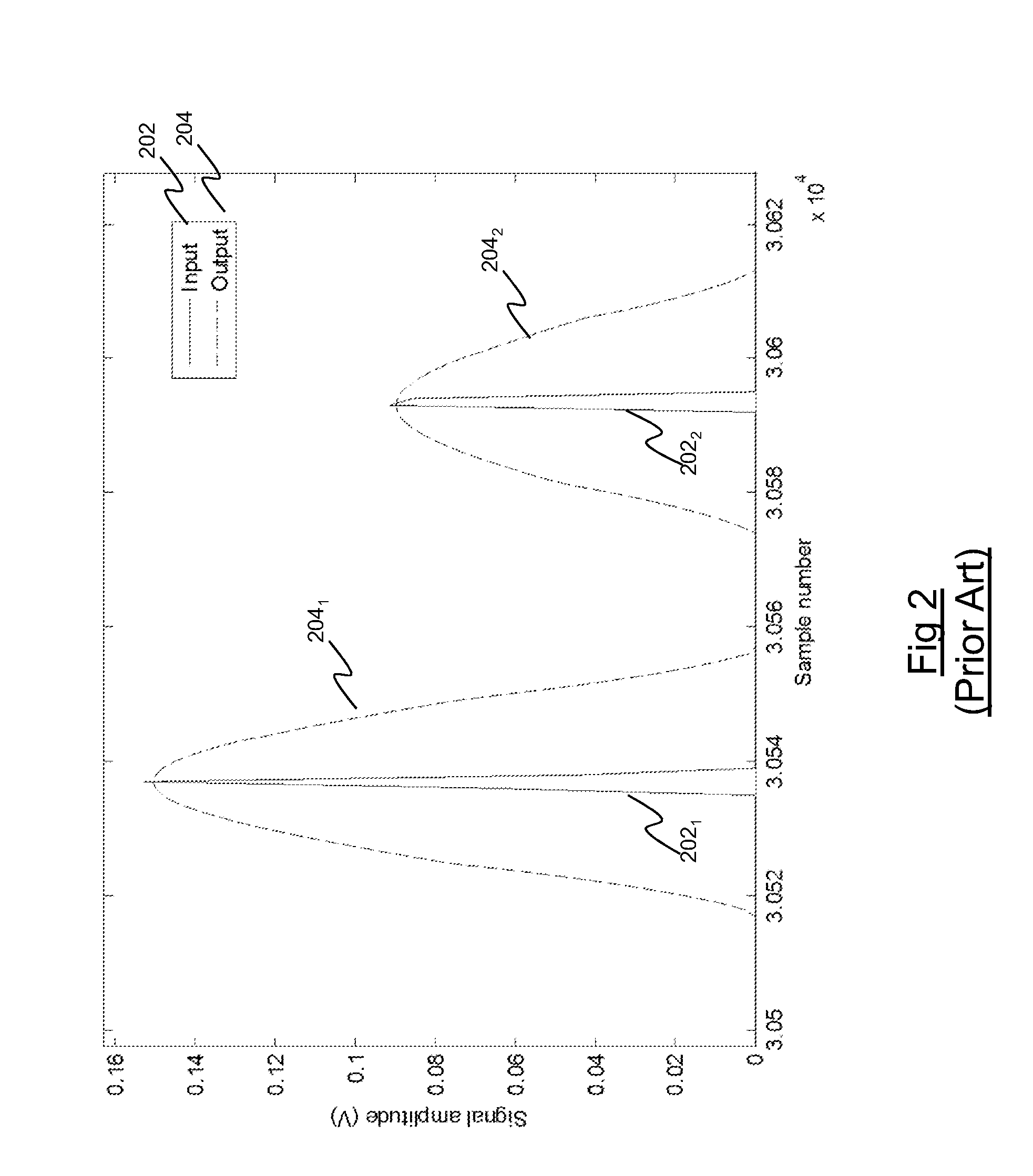Filter
a filter and filter technology, applied in the field of filters, can solve the problems of introducing errors and/or distortion into the transmit signal, and increasing the error vector magnitude (evm), so as to reduce the peak-to-average power ratio (papr), reduce the transmit back-off level of a power amplifier, and increase the radio frequency power
- Summary
- Abstract
- Description
- Claims
- Application Information
AI Technical Summary
Benefits of technology
Problems solved by technology
Method used
Image
Examples
Embodiment Construction
[0034]Preferred embodiments of the invention will now be described by way of example only. With reference to FIGS. 3 and 4 there will now be described a filter 300 according to a preferred embodiment. The filter 300 can be implemented to filter an input signal (“in”) to generate an output signal (“out”). The filter 300 comprises a first delay line which includes a plurality (N−1) of delay elements 3021 to 302N-1. The filter also comprises a plurality (N) of weighting elements 3040 to 304N-1 and a selection block 306. The filter 300 also comprises a supplementary filter which includes a second delay line having a plurality (M−1) of delay elements 3081 to 308M-1, a summation block 310 and a dividing block 312. A plurality (N) of taps are arranged to provide the output from each of the delay elements 302 in the first delay line to a respective one of the weighting elements 304. The outputs of each of the weighting elements 304 are coupled to the selection block 306. An output of the se...
PUM
 Login to View More
Login to View More Abstract
Description
Claims
Application Information
 Login to View More
Login to View More - R&D
- Intellectual Property
- Life Sciences
- Materials
- Tech Scout
- Unparalleled Data Quality
- Higher Quality Content
- 60% Fewer Hallucinations
Browse by: Latest US Patents, China's latest patents, Technical Efficacy Thesaurus, Application Domain, Technology Topic, Popular Technical Reports.
© 2025 PatSnap. All rights reserved.Legal|Privacy policy|Modern Slavery Act Transparency Statement|Sitemap|About US| Contact US: help@patsnap.com



